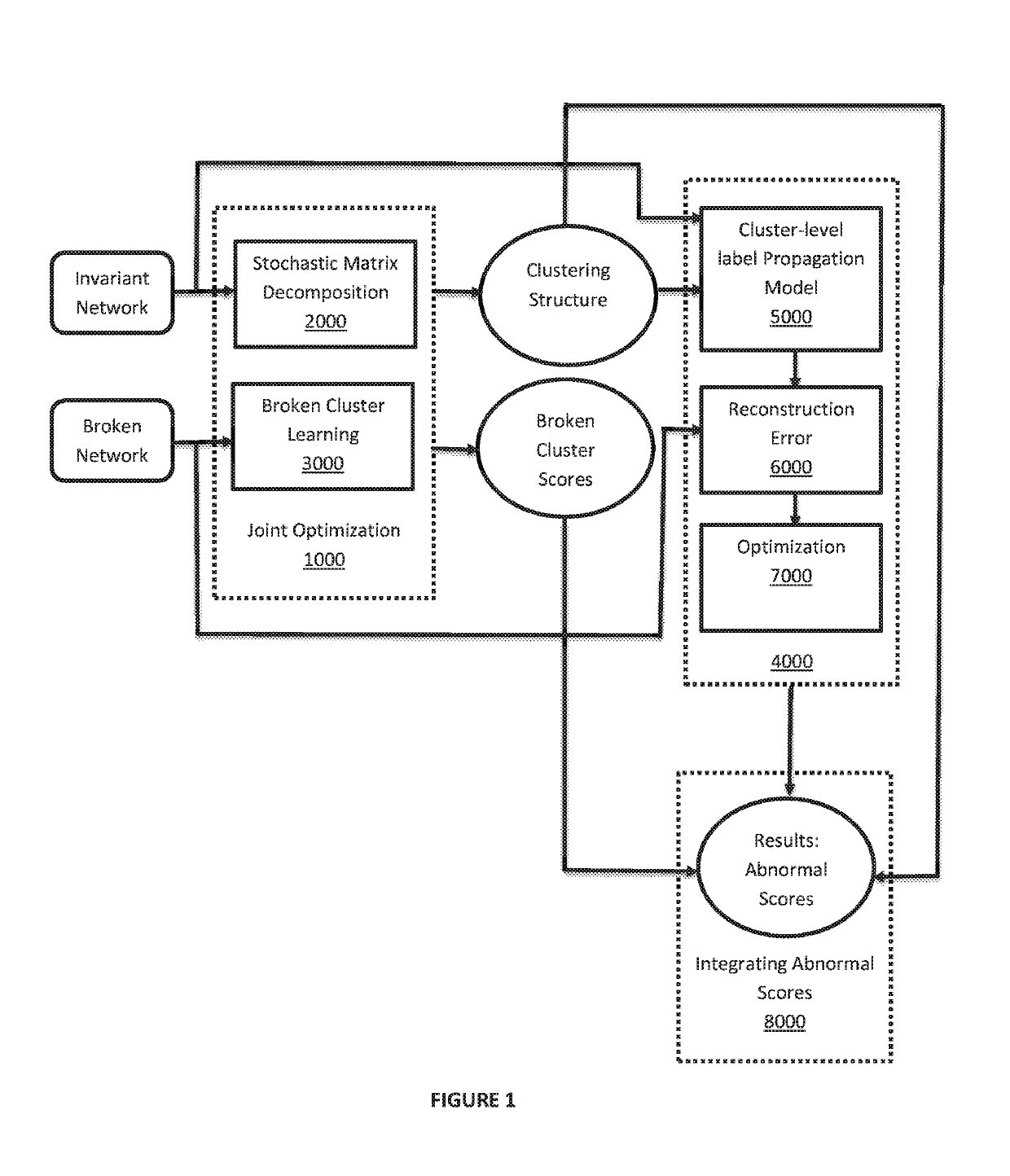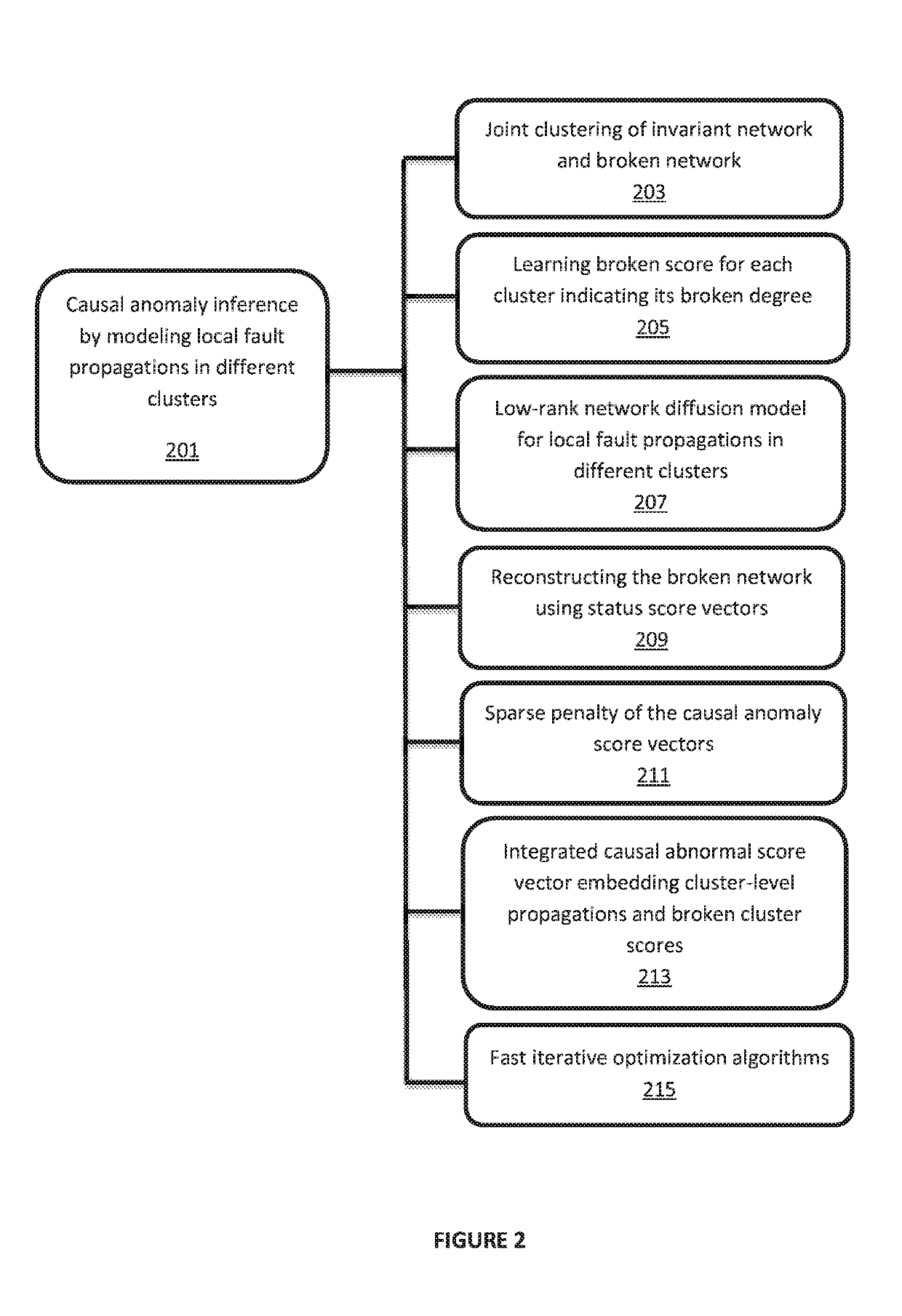Fine-grained causal anomaly inference for complex system fault diagnosis
a fault diagnosis and causal anomaly technology, applied in error detection/correction, instruments, computing models, etc., can solve the problems of inability to manually inspect the entire monitoring data, failure to diagnose system faults,
- Summary
- Abstract
- Description
- Claims
- Application Information
AI Technical Summary
Benefits of technology
Problems solved by technology
Method used
Image
Examples
Embodiment Construction
[0013]In the exemplary embodiments of the present invention, a cluster ranking based fault diagnosis (CRD) system and method is provided for locating true causal anomalies for a system fault. CRD is a two-phase framework. In a first phase, a cluster ranking problem is solved. The goal is to jointly cluster networks and learn degrees of broken severities of different clusters. In a second phase, a low-rank network diffusion model is provided to backtrack causal anomalies with guidance from the results of the first phase. The benefits are two-fold. First, CRD can narrow down a search space of causal anomalies by looking primarily at severely broken clusters. Second, CRD can accurately model local propagation patterns of causal anomaly impacts.
[0014]In the exemplary embodiments of the present invention, an AutoRegressive eXogenous (ARX) model is used to learn relationships between all pairs of a time series. This technique evaluates a correlation between a pair of time series (monitore...
PUM
 Login to View More
Login to View More Abstract
Description
Claims
Application Information
 Login to View More
Login to View More - R&D
- Intellectual Property
- Life Sciences
- Materials
- Tech Scout
- Unparalleled Data Quality
- Higher Quality Content
- 60% Fewer Hallucinations
Browse by: Latest US Patents, China's latest patents, Technical Efficacy Thesaurus, Application Domain, Technology Topic, Popular Technical Reports.
© 2025 PatSnap. All rights reserved.Legal|Privacy policy|Modern Slavery Act Transparency Statement|Sitemap|About US| Contact US: help@patsnap.com



